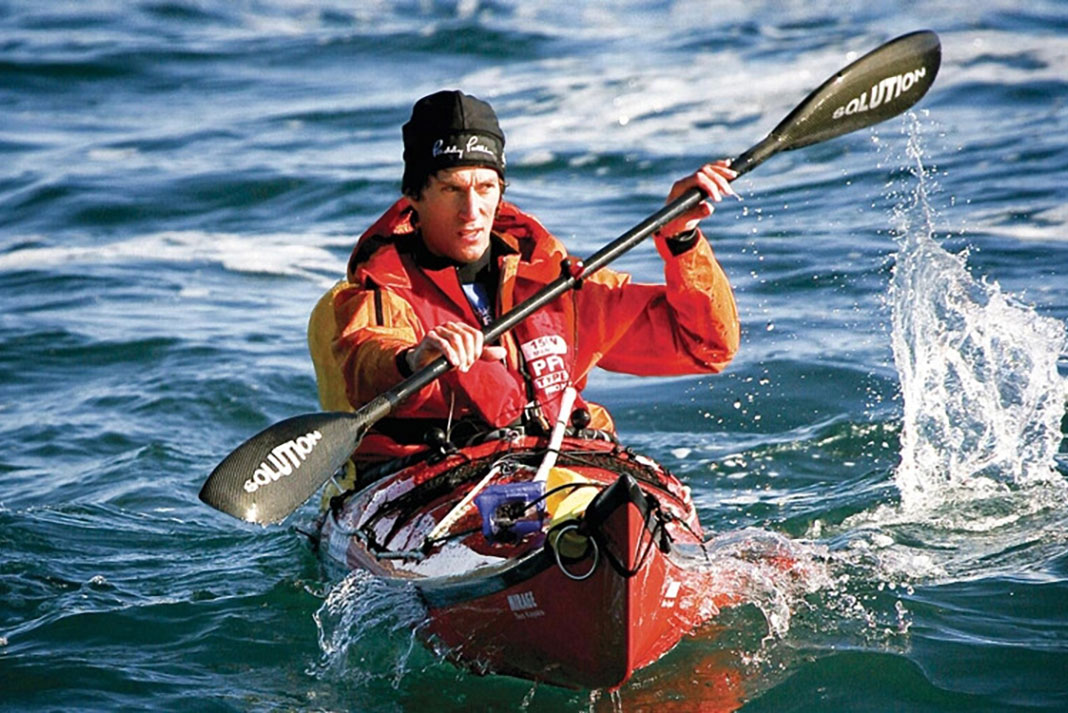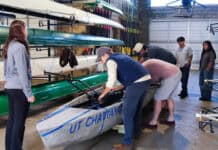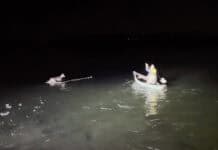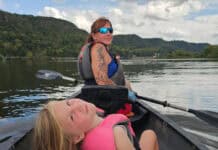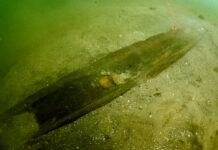On day 78 of kayaking the Inside Passage, a trio of sea kayak guides and instructors woke at 5:45 in the morning to a rush of water that missed their tent by inches.
“I think when a lot of people think of a tsunami they think of a rogue wave,” explained Billy White, sea kayak guide and expedition member. “But this was almost like a flash flood, as if the ocean just moved up several feet and then came at you all at once.”
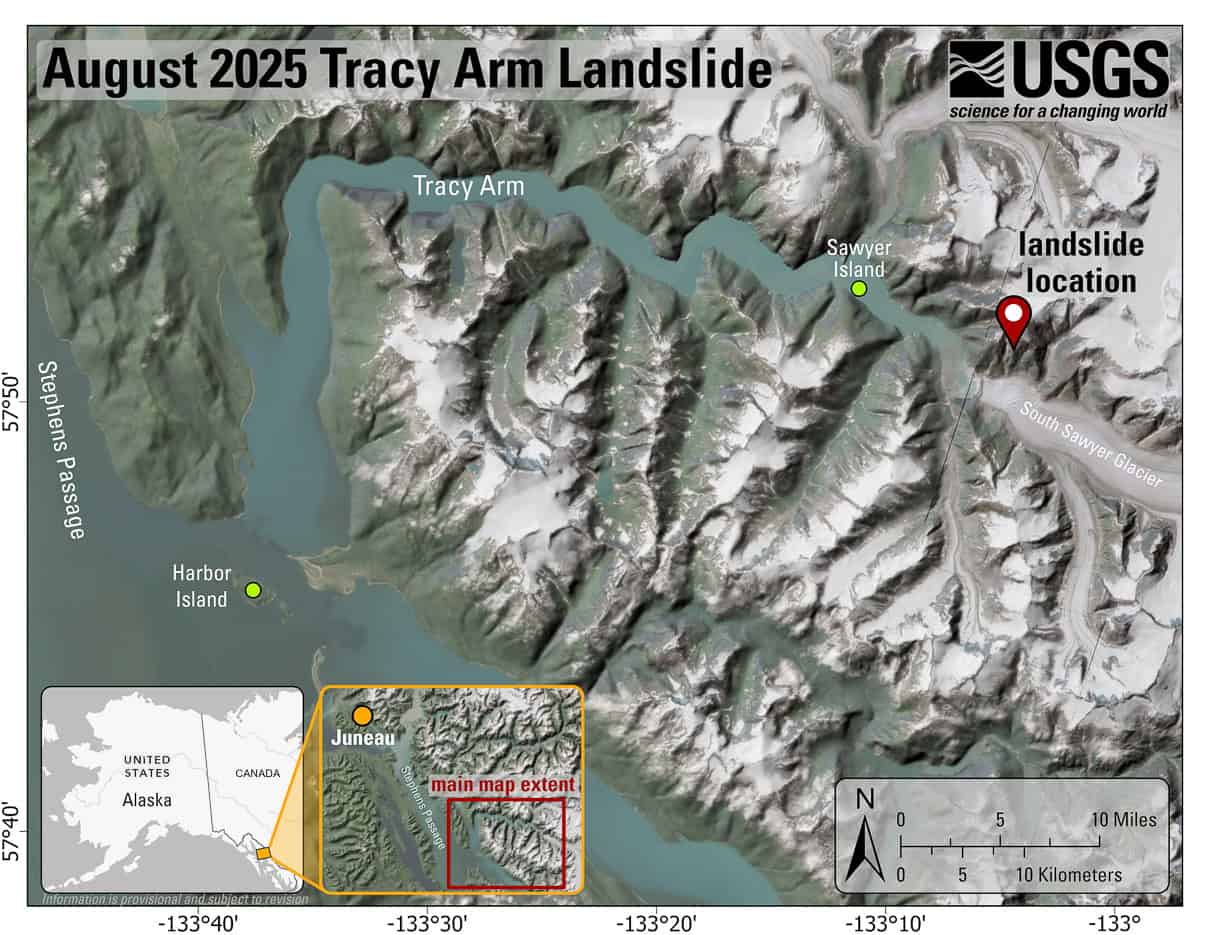
White along with friends Sasha Calvey and Nick Heilgeist began their journey up the Inside Passage, a classic sea kayaking route that runs roughly from Seattle, Washington to Skagway, Alaska, on May 24, 2025 from Washington’s San Juan Islands. On the morning of August 10, the team was camped on Harbor Island in Holkham Bay at the mouth of Tracy Arm, a long fjord with an entrance about 74 kilometres (46 miles) from Juneau, when a tsunami triggered by a landslide at the end of Tracy Arm swept through their camp.
Tracy Arm Tsunami sweeps through expedition kayakers’ camp
“I got woken up by my friend Sasha saying ‘get out of the tent’. And I’m half asleep. I stumble out of the tent and there’s a wall of water that’s rushing by,” shared White. “[The wave] had washed away all of our boats, our gear and our tarp.”
A landslide above the South Sawyer Glacier had raced down the steep mountain slopes into Tracy Arm on Sunday August 10 at 5:26 in the morning. The Landslide Hazards Program reported that preliminary interpretations of photos kayakers took indicate that the resulting tsunami reached heights of nearly 30 metres (100 feet) at Sawyer Island, a small island deep in the fjord, and the resulting tsunami was recorded on a coastal tide gauge in Juneau at 36 centimetres (14 inches).
Landslides that trigger tsunamis in Alaska’s fjords are relatively common, according to the Landslide Hazards Program, with the especially notable Lituya Bay landslide in 1958 creating a tsunami with a maximum height above sea level on shore of 530 metres (approximately 1740 feet).
Surviving a backcountry tsunami
White estimated that the group had camped in the woods 20-25 vertical feet (approximately six to eight metres) above the high tide line and their gear was stored 10-15 vertical feet (approximately 3-4.5 metres) above the high tide line at the mouth of the forest. The kayaker’s account and photos indicate that the wave missed their tent by inches, and White expressed relief that the group chose to camp in the woods rather than on the beach near their gear.
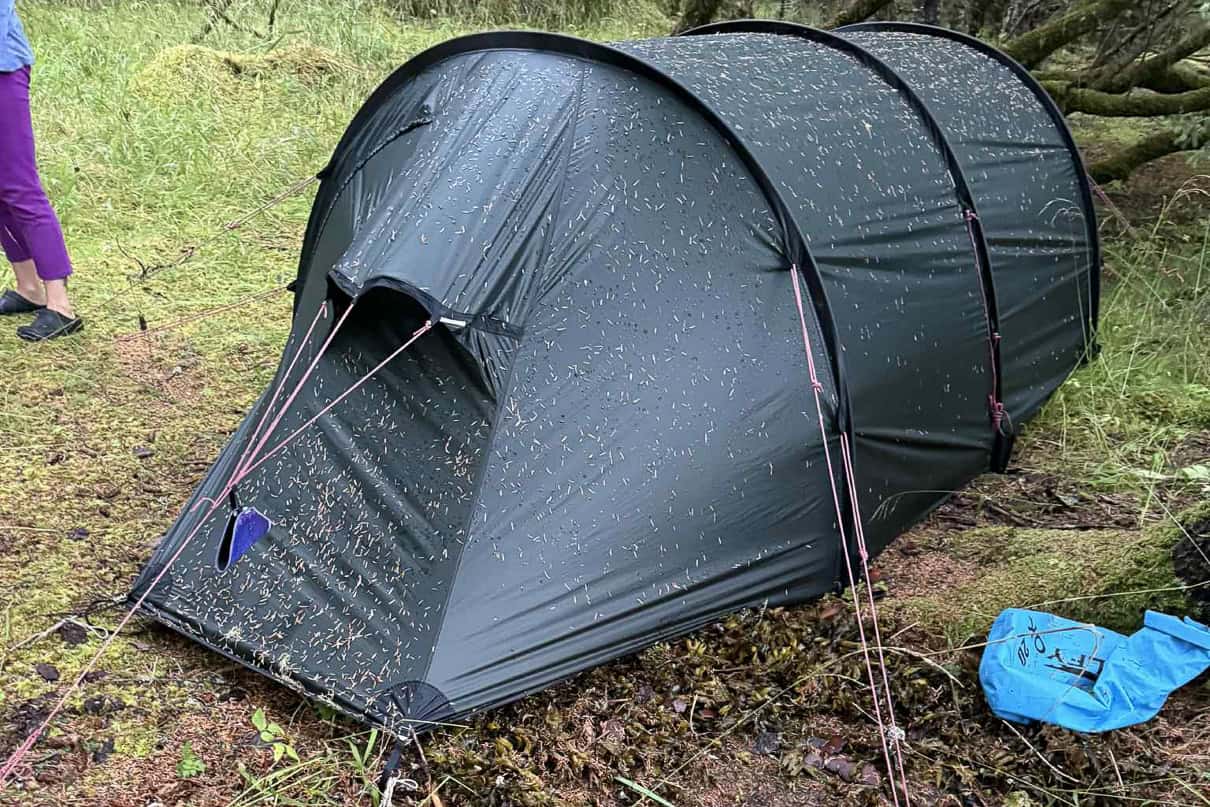
“I’m really glad we went back in the woods,” said White. “We definitely would’ve died if we hadn’t.”
Luckily, Heilgeist’s kayak was used as an anchor for their tarp and some of the group’s gear got caught in the kayak, including White’s marine radio. The team found Heilgeist’s boat about four feet up in a tree and balancing on a rock. White also shared that had the team not recovered the radio, they always keep the Garmin with them in the tent, so they could’ve gotten out a text for assistance if needed.
“My boat was down on the cliffs by the beach so we were able to run and grab it,” said White. “Unfortunately Sasha’s was out in a giant whirlpool.”
After collecting their scattered gear, the team brought it all to the forest to take stock of what had happened. At this point, they didn’t know they’d experienced a tsunami, and didn’t know if another wave could be coming.
After the Tracy Arm tsunami
“We placed a pan pan call out into the void on a marine radio and we were really lucky that there was a boat about three nautical miles away and they were able to come pick us up,” said White.
The team was rescued by The Blackwood, a yacht that does trips around Alaska.
“It was a very surreal experience because we’d just been camping for 78 days and then we get picked up by this gorgeous charter yacht with a chef…it was very disorienting,” White shared. “It was very impressive, the rescue, because at that point the water was still quite turbulent… I would say six to seven knots of current forming these giant whirlpools and so they sent their chase boat through those whirlpools to come grab us.”
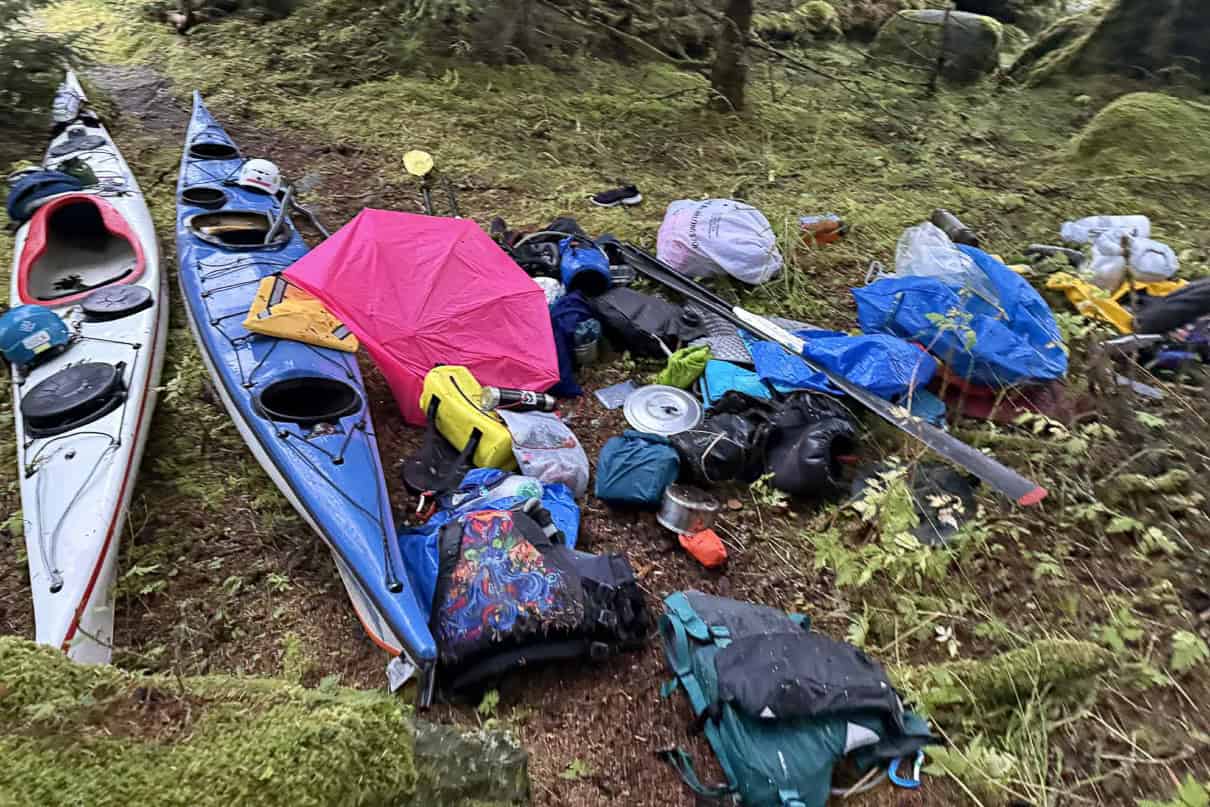
While White and Heilgeist’s boats were damaged but recovered, Calvey wasn’t so lucky – the team saw her boat circulating in a whirlpool shortly before it vanished.
“We lost Sasha’s boat and then all of us… I lost a bunch of gear and a lot of our group gear is gone, so that’s definitely the hardest thing.” White explained. “All being guides, we use our gear for our livelihood.”
Overall, White reflected that the incident emphasized the importance of training for the worst case scenario, practicing rescues, and knowing radio protocols.
“Make sure you know how to operate your radio and how to place an emergency call,” said White, adding that they would consider sleeping with their radio in the future. “That would probably be my biggest takeaway. Know what to do when disaster strikes. That’s why we practice our rescues… make sure you have that drilled into your head because when it actually happens it might be 5:45 in the morning stumbling out of your sleeping bag.”
Despite an unfortunate early end to their Inside Passage expedition, the team hopes to return and complete the final leg of their journey beginning at Tracy Arm and heading to Glacier Bay in the future. Find their GoFundMe to offset the cost of new gear here.


